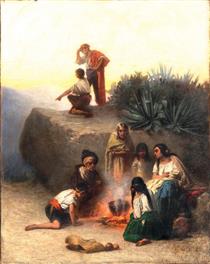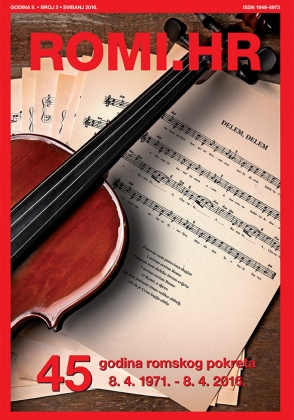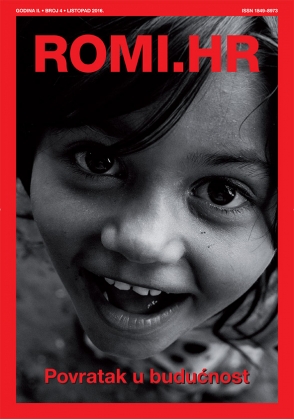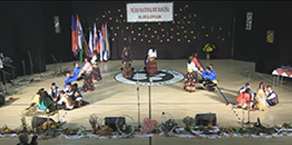Features ROMI.HR
/Roma's interactions with various cultures are evident in their cuisine as it is a unique and multifaceted blend of culinary traditions from various people and countries that Roma have encountered over many centuries. It incorporates elements from Southern Asian, Middle Eastern and European cuisines, while retaining its authenticity and distinctive features.
Although Roma people trace their ancient origins to India, their traditional cuisine does not stretch that far back. Having lived in Europe for hundreds of years, their food is instead a blend of techniques and ingredients drawn from the diverse cultures of Middle East and the Balkans, where their nomadic ancestors once roamed. The influence of Roma people's lifestyle and social challenges related to it, such as poverty, isolation and discrimination have played a significant role in shaping culinary traditions. Both factors have contributed to the unique and adaptive nature of Roma cuisine.
Out of necessity to move frequently, Roma developed cooking methods that required minimal and portable equipment. Many Roma cooks used cast-iron pots, which were durable, versatile, and could be easily transported. Skewers for grilling meats over open fires were also common, allowing Roma families to prepare meals quickly in temporary camp sites. Their meals were often simple, cooked in one-pot stews, soups, or dishes that could be made over an open fire or in a hearth which imparted a unique aroma and flavour to the dishes. This also made it easier to prepare food for all members of the large family, which was important for Roma's strong sense of community.
In order to have food that could last for long periods while traveling Roma communities frequently relied on methods like drying, salting, or pickling to preserve meats, vegetables, and fruits. These preservation methods allowed for the portability of food without refrigeration and other forms of keeping it related with sedentary life which would have been impossible in their nomadic lifestyle. Beef and in some cases pork are rare, with chicken, lamb, goat, wild birds, and game being major sources of protein. Such products as potatoes, peppers, cabbage, and rice form the foundation of many dishes, while paprika and garlic are favoured spices. Common traditional dishes include Guvetch — a stew of meat and vegetables, Shurpa — a hearty soup, and Saviako — a traditional dish in Roma cuisine, consisting of fried flatbreads with various fillings.
Saviako is It is a versatile dish that can be either sweet or savoury. Fillings can vary from nuts and raisins to meat, cheese, or potatoes. In the classic version, Saviako is made from yeast dough, and the flatbreads are fried in a pan or in oil, giving them an appetizing golden crust and a soft interior. The flatbreads can be served as a separate dish or as an accompaniment to tea or other beverages.
One of the most unusual dishes associated with Roma cuisine is Niglo, baked hedgehog. To prepare the dish, the hedgehog is encased in clay and placed on white-hot stones. Once cooked, the clay is removed, along with the quills, and the hedgehog is served wrapped in leaves and seasoned with garlic.
Roma people are present across numerous countries. Although there are broad cultural patterns of theirs, Roma customs largely reflect those of the countries in which they live and of the countries they were once travelling through. This influence is evident in the diverse culinary traditions within the community.
For example, Sarma is a spicy dish popular with all the people living there including Roma. They consist of a mixture of minced meat, rice and vegetables wrapped in cabbage leaves and cooked in tomato sauce. As for beverages, Romano čajo – tea with fresh fruit which Roma drink from a glass is very common.
Several key elements have been adopted from Indian subcontinent cuisine, namely a rich array of spices such as cumin, coriander, turmeric, and garam masala, adding depth and warmth to Roma cooking. Also, rice and lentils play an important role in Roma meals along with the Indian subcontinent’s approach to preparing meat, including marinating and slow-cooking.
Though once Roma people due to their nomadic lifestyle cooked their food over an open fire, in Russia during the winter months in the villages, they made use of the Russian stove. It is a traditional large masonry stove built from brick or stone and designed to provide heating, cooking, and sometimes even sleeping space. Later, the more settled members of Roma community adopted the stove permanently, along with some traditional dishes like borsch, adding more spices to this famous beetroot soup with cabbage.
Roma cuisine is not just a reflection of the diverse regions they have inhabited, but also a proof to their resilience, adaptability and strong sense of community. Throughout centuries of hardship, persecution and displacement, life in poverty and semi-isolation, Roma have managed to survive and develop varied culinary traditions. Although it is hard to say now what is left from the original Roma cuisine, we know that that cuisine of the past has been enriched and amplified by the cultures around.
 Back to Features
Back to Features













